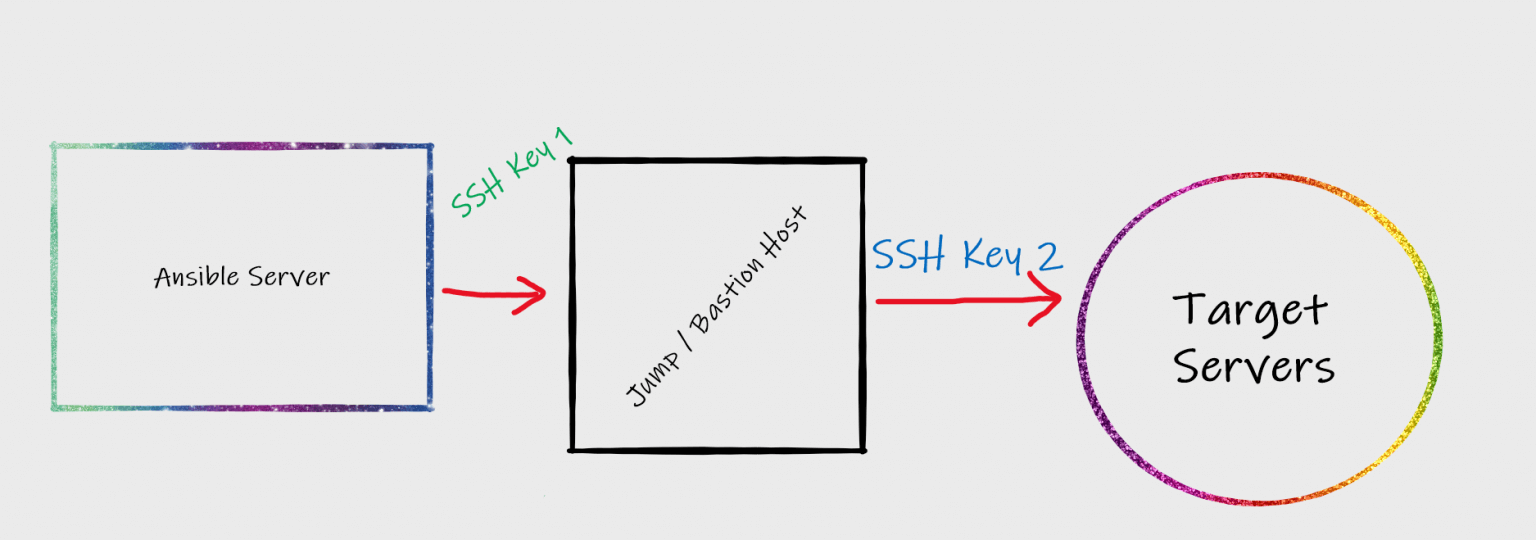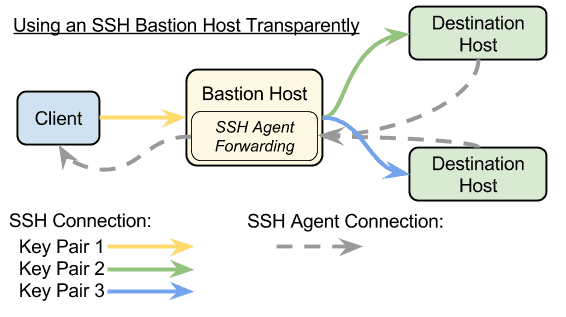

To ensure that any combination of gateways and bastions that you use match your networking requirements, it's useful to understand the connection ordering behavior between. Then it comes up with the same error, in addition to saying that it couldn't find the directory "/home/bob2/. Gateways are inserted at project ingress when you connect using SSH to a server on a project that has gateways enabled. If I force specify the identity paths: Host bastion

After all, bastion hosts are the first target for attackers looking to compromise access to infrastructure. I also tried allowing agent forwarding and TCP forwarding in the sshd_chroot config as well on all parties (origin, bastion, and server), but that didn't make a difference. SSH Bastion Host Best Practices by Sakshyam Shah Although it is relatively easy to deploy a bastion host in your infrastructure, securing a bastion host requires careful consideration from design to deployment.
#Ssh bastion password#
from your laptop/pc in your home directory. BastionZero is a cloud service, so you dont need to operate and maintain self-hosted bastion hosts, SSH certificate authorities, VPNs, password managers or. Somehow it worked for the guy, but doesn't seem to work for me. Follow the below steps to setup your SSH and enable tunneling via Bastion host or jump servers. However it comes up with an error saying "permission denied", invalid public key file? Prox圜ommand ssh bastion nc %h %p 2> /dev/null Here's what I have inside the config file: Host bastion Yes, some users may see value in Boundary providing access to an existing bastion host deployment.So I'm essentially trying to do this: ssh -t ssh above works fine if I just put it into the terminal, however I am having a hard time trying to replicate it via the. This is helpful for a project that might be run from various workstations or servers without the same SSH configuration (the configuration is stored alongside the playbook, in the inventory).
#Ssh bastion how to#
The advantages to Boundary's access model are outlined above.Ĭan Boundary extend a Bastion/Jumphost access model? Method 1 - Inventory vars The first way to do it with Ansible is to describe how to connect through the proxy server in Ansibles inventory. Yes, in many cases you can use Boundary as a replacement for an existing bastion host-based access model to infrastructure.

Instead of first SSHing to the bastion host and then using ssh on the bastion to connect to the remote host, ssh can create the initial and second connections itself by using ProxyJump. You can use SSH to inject the credentials of any target resources that you want to connect to using Boundary, so that the credentials are never exposed to the user while establishing a connection.Īlternatively, Boundary can return brokered credentials back to users (if permitted), which could take the form of API tokens, usernames and passwords, public keys, etc.Ĭan Boundary replace a Bastion/Jumphost access model? The ssh command has an easy way to make use of bastion hosts to connect to a remote host with a single command. IT departments now have to manage updates for another server and the sprawl of infrastructure continues, increasing your attack surface, and requiring your IT department to be perfect.īoundary is not a traditional bastion host.īoundary streamlines just-in-time access to privileged sessions for users, and tightly controls access to infrastructure with role-based access controls (RBAC).īoundary validates a user's identity using your identity provider of choice, and then dynamically grants them access to the resources they need using their associated permissions.īoundary's worker nodes, the resources that proxy connections to private endpoints, are fundamentally stateless and can be easily scaled elastically using modern development tools. Maintaining security groups, network ACLs, and IAM controls on a bastion host at a per-user level is nearly impossible, unless you create and maintain multiple bastion hosts per user or group. Alternatively, ed25519 keys are accepted by default in OpenSSH. Add the following line to your OpenSSH daemon file (which is either /etc/ssh/sshdconfig or a drop-in file under /etc/ssh/sshdconfig.d/ ): CASignatureAlgorithms +ssh-rsa. If you want to set up your cloud environment securely, you may choose to run all of your important workloads behind a NAT Gateway, and provision a DMZ with a set of hardened bastion servers.īastion host security groups are often not locked down at the network layer.Īdditionally, users who log into a bastion host using SSH are typically dropped into a privileged account. On Ubuntu 20.04 or later you must explicitly allow the use of the ssh-rsa algorithm.


 0 kommentar(er)
0 kommentar(er)
